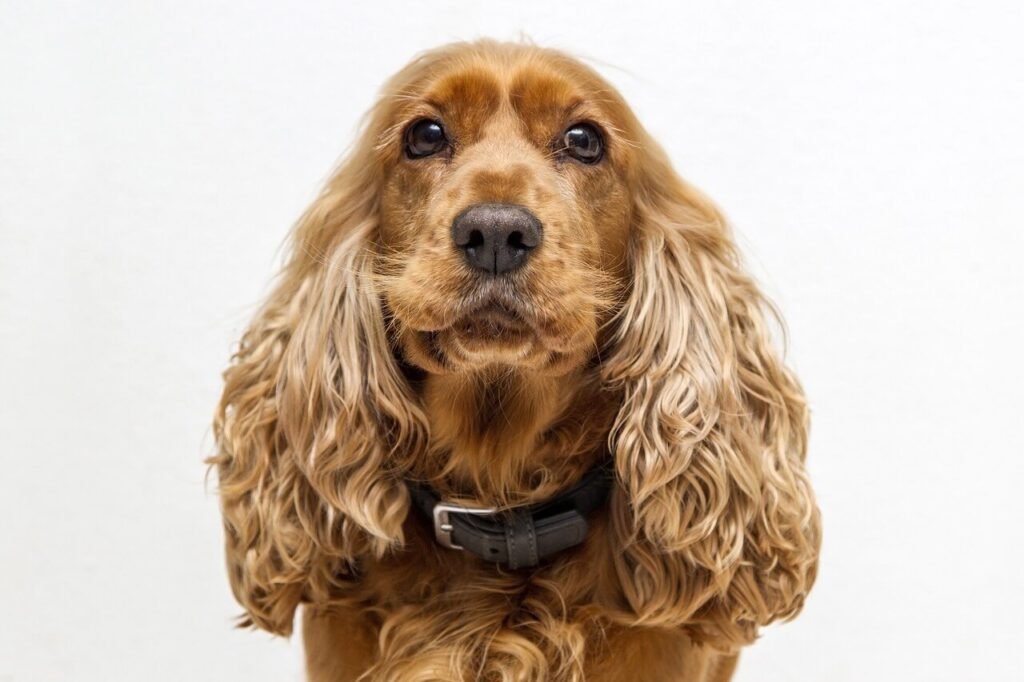Signs Your Dog is Protective of You: Understanding the Bonds of Loyalty
Dogs are more than just pets; they are loyal companions who often see us as part of their pack. Their protective instincts are deeply rooted in their ancestry and can manifest in various ways, depending on their personality, breed, and bond with you. If you’ve ever wondered whether your furry friend is watching out for you, this blog post will explore the subtle (and not-so-subtle) signs that indicate your dog’s protective nature. From body language to specific behaviors, we’ll delve into what makes your dog your ultimate guardian.
Body Language: How Your Dog Communicates Protection
Your dog’s body language is a powerful indicator of their emotions, including their protective instincts. Observing these cues can help you understand when your dog feels the need to guard you. Here are some common signs to look out for:
Stiff Posture: When your dog stands rigidly with their muscles tense, it’s often a sign they’re on high alert and ready to defend you.
Raised Hackles: The hair along your dog’s back may stand up when they sense a potential threat. This reaction is involuntary and signals heightened awareness.
Focused Staring: If your dog locks eyes on something or someone while ignoring distractions, they could be assessing a perceived danger to you.
Tail Position: A tail held high and stiff, rather than wagging loosely, indicates your dog is in protective mode.
Ears Forward: When your dog’s ears are pointed forward, it shows they are concentrating on something in their environment, possibly to protect you.
Understanding these non-verbal cues can deepen your connection with your dog and help you respond appropriately to their needs. Remember, these behaviors are natural, but they can also escalate if not managed properly.
Behavioral Patterns: Everyday Actions That Reveal Protection
Beyond body language, your dog’s daily actions can reveal their protective instincts. These behaviors are often subtle but speak volumes about their loyalty. Here’s a breakdown of common protective patterns:
Positioning Themselves Between You and Strangers: Whether at home or in public, your dog may place themselves between you and unfamiliar people or animals.
Barking at Unfamiliar Sounds: Your dog’s bark can serve as an early warning system, alerting you to anything unusual in your surroundings.
Following You Everywhere: While this behavior might seem clingy, it’s often a sign your dog wants to keep you safe by staying close.
Guarding Your Personal Space: Some dogs become territorial over areas where you spend time, such as your bed or favorite chair.
Reacting to Changes in Your Emotions: Dogs are highly attuned to human emotions. If you appear upset or anxious, your dog may act protectively to comfort you.
These behaviors highlight your dog’s dedication to ensuring your safety. By recognizing them, you can better appreciate the depth of your bond and address any concerns before they escalate.
Check this guide 👉Why Choose a Belgian Malinois as Your Guard Dog? Best 7 Tips
Check this guide 👉The Ultimate Guide to Guard Dog Training: Best 7 Tips!

Protective Behaviors | What They Mean |
|---|---|
Stiff posture | Indicates readiness to defend against threats |
Raised hackles | Shows heightened alertness and focus |
Barking at strangers | A way to warn off potential dangers |
Following you closely | Demonstrates loyalty and a desire to stay nearby |
Guarding personal belongings | Reflects territorial instincts tied to protection |
Training Tips: Encouraging Positive Protective Instincts
While protective instincts are natural, they need to be channeled positively to ensure harmony in your household. Proper training can help manage these tendencies effectively. Consider the following tips:
Socialization from an Early Age: Exposing your dog to different people, animals, and environments helps them distinguish between real threats and harmless situations.
Teaching Commands Like “Stay” and “Leave It”: These commands give you control over your dog’s protective impulses during stressful moments.
Rewarding Calm Behavior: Reinforce calm reactions to unfamiliar stimuli to reduce unnecessary aggression or anxiety.
Avoiding Overly Protective Scenarios: Don’t encourage overly territorial behavior, such as growling at guests, as this can lead to problematic habits.
Consulting a Professional Trainer: If your dog’s protective behavior becomes excessive, seek guidance from a certified trainer or behaviorist.
With consistent effort, you can nurture your dog’s protective nature while maintaining a balanced relationship. Training strengthens trust and ensures both you and your dog feel secure.
When Protection Becomes Problematic: Signs to Watch For
While protective instincts are admirable, they can sometimes cross into problematic territory. It’s important to recognize when your dog’s behavior requires intervention. Look out for these red flags:
Aggressive Growling or Snapping: If your dog reacts aggressively without provocation, it may indicate fear-based protection.
Excessive Barking: Constant barking, even in safe environments, suggests your dog is overly anxious or territorial.
Refusal to Listen to Commands: Ignoring basic commands in favor of protective behavior can signal a lack of control.
Resource Guarding: Protecting food, toys, or spaces excessively may lead to conflicts within the household.
Unwarranted Fearfulness: If your dog perceives every stranger as a threat, it may stem from insecurity rather than genuine protection.
Addressing these issues promptly can prevent escalation and promote a healthier dynamic. Consulting a professional trainer or veterinarian is advisable if you notice persistent problems.
Recognizing When Protection Turns into Overprotectiveness
While it’s natural for dogs to be protective, overprotectiveness can lead to behavioral issues that disrupt daily life. Here are some signs that your dog may be crossing the line:
Constant Vigilance: Your dog is always scanning the environment, even in familiar or safe settings.
Aggression Towards Friends or Family: If your dog growls or snaps at people they know well, it could indicate misplaced protectiveness.
Refusal to Let You Out of Sight: Following you excessively and showing distress when you leave their view can signal overattachment.
Reacting to Neutral Stimuli: Barking or lunging at harmless objects, like a passing car or a blowing leaf, suggests hyper-awareness.
Difficulty Calming Down: Even after the perceived threat has passed, your dog remains on edge and restless.
If you notice these behaviors consistently, it’s important to address them through training and professional guidance. Balancing your dog’s instincts with calm obedience is key to maintaining a healthy relationship.
Why Having a Protective Dog Can Be an Advantage
A protective dog offers more than just companionship; they can enhance your sense of security and well-being. Here are some benefits of having a dog with protective instincts:
Increased Home Security: A protective dog can deter intruders and alert you to suspicious activity around your property.
Emotional Support During Stressful Times: Knowing your dog is watching over you can provide comfort and reduce anxiety.
Strengthened Bond Through Trust: The mutual reliance between you and your dog fosters a deeper emotional connection.
Early Warning System for Danger: Dogs often sense threats before humans do, giving you valuable time to react.
Encouraging Active Lifestyles: Many protective breeds require regular exercise, motivating you to stay active and healthy.
These advantages highlight how a protective dog can enrich your life while keeping you safe. However, it’s crucial to ensure their instincts are balanced and well-managed.
Tips for Handling Your Dog’s Protective Instincts Outside the Home
Taking a protective dog into public spaces requires preparation and patience. These tips can help you manage their behavior effectively:
Use a Secure Leash: Always keep your dog on a sturdy leash to maintain control in crowded or unfamiliar environments.
Carry Treats for Distraction: Rewarding calm behavior with treats can redirect your dog’s focus from potential triggers.
Practice Desensitization Techniques: Gradually expose your dog to new stimuli in controlled settings to reduce overreactions.
Communicate Clearly with Others: Politely inform strangers not to approach your dog if they seem uneasy or overly alert.
Stay Calm Yourself: Dogs pick up on their owner’s emotions, so remaining composed helps reassure your pet in stressful situations.
By implementing these strategies, you can ensure outings with your protective dog are enjoyable and stress-free for both of you. Consistency and patience are key to success in managing their instincts outside the home.
Frequently Asked Questions About Protective Dogs
Is it normal for my dog to bark at strangers?
Yes, many dogs bark to alert their owners of unfamiliar people. However, excessive barking should be addressed through training.
Can all breeds exhibit protective behavior?
Absolutely! While certain breeds are known for their protective traits, any dog can display protective instincts based on their personality and upbringing.
How do I stop my dog from being overly protective?
Socialization, obedience training, and positive reinforcement can help manage overly protective tendencies.
Should I punish my dog for growling?
No, punishing growling can suppress communication. Instead, identify the cause of the behavior and work on desensitizing your dog to triggers.
Does neutering/spaying affect protective instincts?
Neutering or spaying may reduce territorial behaviors but won’t eliminate protective instincts entirely.
Celebrating the Bond: Living Harmoniously with Your Protective Dog
Having a protective dog is both a blessing and a responsibility. Their loyalty and devotion create a unique bond that enriches our lives, but it’s essential to guide their instincts in a positive direction. By understanding the signs of protection, addressing problematic behaviors, and fostering open communication, you can build a harmonious relationship with your furry companion. Remember, your dog’s protective nature reflects their love for you—a testament to the incredible connection humans share with their canine friends.
Why Is My Cats Second Eyelid Showing? Best 7 Expert Tips! Understand causes, health signs, and how to respond when your cat’s third eyelid becomes visible.
How Do I Know If My Cat Died Peacefully? Best 7 Expert Tips! Discover the quiet signs of a peaceful feline passing and find comfort in their final moments.
Cat Allergy Eyes: Best 7 Expert Tips! Discover why your eyes react to cats and learn proven strategies for relief—without giving up your feline friend.
Why Do Abyssinian Cat Colors Matter? Best 7 Expert Tips! Discover the genetics, rare hues, and care secrets behind Abyssinian coat colors for a healthier, happier cat.





